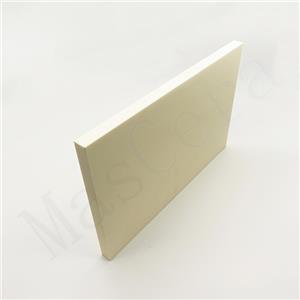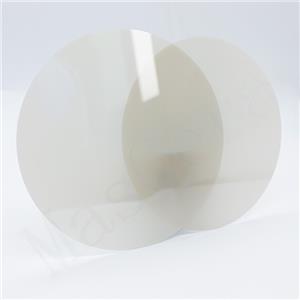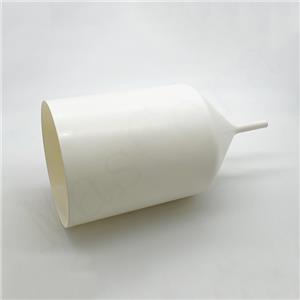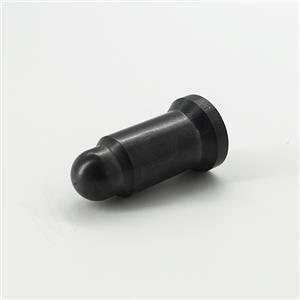Blog
-
Advantages and Disadvantages of AlN Ceramic
Aluminum nitride ceramic is an advanced material with outstanding thermal conductivity, electrical insulation, and mechanical stability, making it ideal for high-performance electronic applications. However, its susceptibility to hydrolysis, brittleness, and high production costs remain challenges for broader adoption. Despite these limitations, the continuous advancement of AlN ceramic processing technologies is expected to enhance its application potential in semiconductors, optoelectronics, and high-temperature environments.
03-03-2025 -
Advantages and Disadvantages of Zirconia Ceramic
Superhard zirconia, also known as ZrO2 ceramic, offers exceptional mechanical strength, high hardness, wear resistance, biocompatibility, and thermal insulation, making it an ideal material for industrial, medical, and decorative applications. However, its brittleness, temperature sensitivity, and machining difficulty should be considered when selecting it for specific uses.
27-02-2025 -
Advantages and Disadvantages of Alumina Ceramic
Alumina ceramics (Al₂O₃ ceramic) provide outstanding benefits, including high hardness, high-temperature resistance, excellent corrosion resistance, and superior electrical insulation. However, challenges such as brittleness, machining difficulty, and limited thermal conductivity must be considered when selecting it for industrial applications. Despite these disadvantages, high-temperature resistant alumina remains a critical material for various demanding applications.
27-02-2025 -
Advantages and Disadvantages of Silicon Carbide Ceramics
Silicon carbide ceramics (SiC ceramic) offer a unique combination of high hardness, excellent high-temperature resistance, superior wear resistance, and outstanding corrosion resistance, making them an essential material in refractory applications, mechanical seals, heat exchangers, and high-power electronic components. However, their brittleness, poor thermal shock resistance, and high production costs pose certain limitations. Despite these challenges, high-hardness silicon carbide remains a key material in industries requiring durability, strength, and thermal efficiency, proving its significance in modern engineering and advanced manufacturing.
25-02-2025 -
Advantages and Disadvantages of Silicon Nitride Ceramic
Silicon nitride ceramic (Si3N4) offers a wide range of advantages such as high hardness, excellent thermal stability, corrosion resistance, and low density, making it suitable for demanding applications across various industries. However, its brittleness, machining challenges, and poor electrical conductivity are factors to consider when choosing it for specific applications. Despite these drawbacks, the material's unique properties continue to drive its adoption in fields like aerospace, automotive, and electronics.
25-02-2025 -
Carbon Reaction of Si₃N₄ Ceramic in High-Temperature Environments
silicon nitride (Si₃N₄) ceramic is widely used for its excellent heat resistance, oxidation resistance, and mechanical strength. However, recent studies indicate that under extreme high temperatures (≥1300°C), Si₃N₄ may react with carbon, gradually transforming into silicon carbide (SiC) ceramic while releasing nitrogen gas (N₂).
19-02-2025 -
Differences Between Zirconia Ceramic and Alumina Ceramic
Compares zirconia ceramic and alumina ceramic, highlighting their differences in hardness, toughness, wear resistance, chemical stability, and thermal properties. It also explores their key applications in machinery, electronics, biomedical, and chemical industries, helping readers choose the right Aluminum Oxide or Zirconium Oxide ceramic for specific needs.
13-02-2025 -
Why Alumina Ceramic Tubes Perform Exceptionally Well in High-Temperature Environments
In high-temperature industrial applications, alumina ceramic tubes have proven to be a superior choice due to their exceptional thermal resistance, mechanical strength, and chemical stability. Whether used in high-temperature furnaces, steel smelting, metal casting, or glass manufacturing, alumina ceramic tubes ensure long-term durability and reliable performance.
11-02-2025 -
Key Ceramic Components in Plasma Etching Equipment: Ceramic Chambers, SiC Focus Rings, and More
In plasma etching equipment, essential ceramic components include ceramic chambers, SiC focus rings, SiC electrostatic chucks, Alumina Ceramic nozzles, gas dispersion plates, and other structural elements.
05-02-2025 -
How to Choose the Right PBN Crucible
Whether you need uniform heating, efficient pouring, or precise material handling, the right crucible can greatly impact your results.Selecting the right crucible involves understanding your specific process requirements.
16-01-2025




